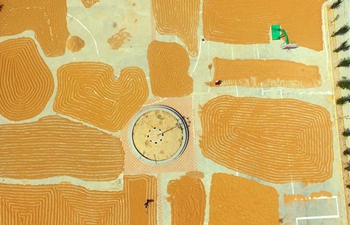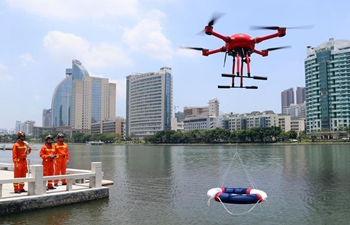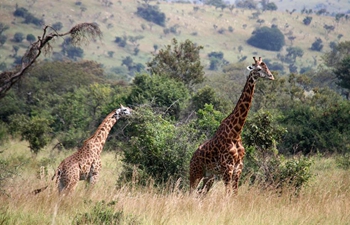DENVER, the United States, June 7 (Xinhua) -- The New Horizons spacecraft has successfully awakened from a planned 165-day hibernation period and is being prepared for the most distant planetary encounter in the history of robotic space exploration -- a New Year's Day 2019 flyby of an Kuiper Belt object (KBO) nicknamed Ultima Thule, according to the U.S. National Aeronautics and Space Administration (NASA).
EXIT HIBERNATION
Cruising through the Kuiper Belt nearly 6.1 billion km from Earth, New Horizons had been in resource-saving hibernation mode since Dec. 21.
Kuiper Belt is the unexplored outer region of the solar system that includes Pluto and potentially thousands of similar icy, rocky small planets.
From there, more than 40 times the distance between Earth and the sun, a radio signal sent on Tuesday from the spacecraft at light speed reached Earth 5 hours and 40 minutes later.
Radio signals confirming that New Horizons had executed on-board computer commands to exit hibernation reached mission operations at the Johns Hopkins Applied Physics Laboratory in Laurel, Maryland, via NASA's Deep Space Network.
"Our team is already deep into planning and simulations of our upcoming flyby of Ultima Thule and excited that New Horizons is now back in an active state to ready the bird for flyby operations, which will begin in late August," mission Principal Investigator Alan Stern of the Southwest Research Institute in Boulder, Colorado, said in a statement.
The 165-day hibernation that ended this week was the second of two such "rest" periods for the spacecraft before the Ultima Thule flyby, NASA said in a press release.
PLANETARY ENCOUNTER PREPARATIONS
New Horizons, launched in 2006, has been a mission of firsts -- first to explore Pluto, first to explore the Kuiper Belt, a circumstellar disk surrounding the solar system, and the fastest spacecraft ever launched.
The unmanned, piano-sized probe is now preparing for its next encounter on Jan. 1, 2019.
According to Johns Hopkins University Applied Physics Laboratory, the spacecraft was in good health and operating normally, with all systems coming back online as expected.
Using signals from the Deep Space Network, the mission team will collect navigation tracking data over the next three days. The team will also send the first of many commands to New Horizons' onboard computers to begin preparations for the Ultima flyby.
Located about 1.61 billion km beyond Pluto, which New Horizons famously flew by in July 2015, the KBO was discovered in June 2014 by scientists using the Hubble Space Telescope.
Lasting about two months, those flyby preparations include memory updates, Kuiper Belt science data retrieval, and a series of subsystem and science-instrument checkouts.
In August, the team will command New Horizons to begin making distant observations of Ultima, images that will help the team refine the spacecraft's course to fly by the object.
HISTORIC FLYBY
New Horizons is the first NASA spacecraft to fly by Pluto and the fifth to speed beyond the outer planets. So many of its activities set distance records.
Space is the "newest realm of human activity," and a new frontier for mankind, Voyager Principal Investigator Edward Stone, a renowned American space scientist told Xinhua in an earlier interview.
New Horizons made history back in July 2015, when it made a close proximity pass of the dwarf planet Pluto and its moons, returning data that has transformed our view of these intriguing worlds near the inner edge of the Kuiper Belt.
Beginning in 2017, New Horizons' extended mission in the Kuiper Belt aims to complete the reconnaissance of the solar system.
NASA said the spacecraft is expected to observe at least two-dozen other KBOs, dwarf planets and "Centaurs," former KBOs in unstable orbits that cross the orbits of the giant planets.
Since then, New Horizons has been speeding deeper into this distant region, observing other KBOs and measuring the properties of the heliosphere while heading toward another historic flyby of Ultima Thule.
New Horizons is now approximately 262 million km, less than twice the distance between Earth and the sun, from Ultima, speeding 1,223,420 km closer each day.
The spacecraft will now remain active until late 2020, after it has transmitted all data from the Ultima encounter back to Earth and completed other Kuiper Belt science observations.

















